Boigu
Queensland
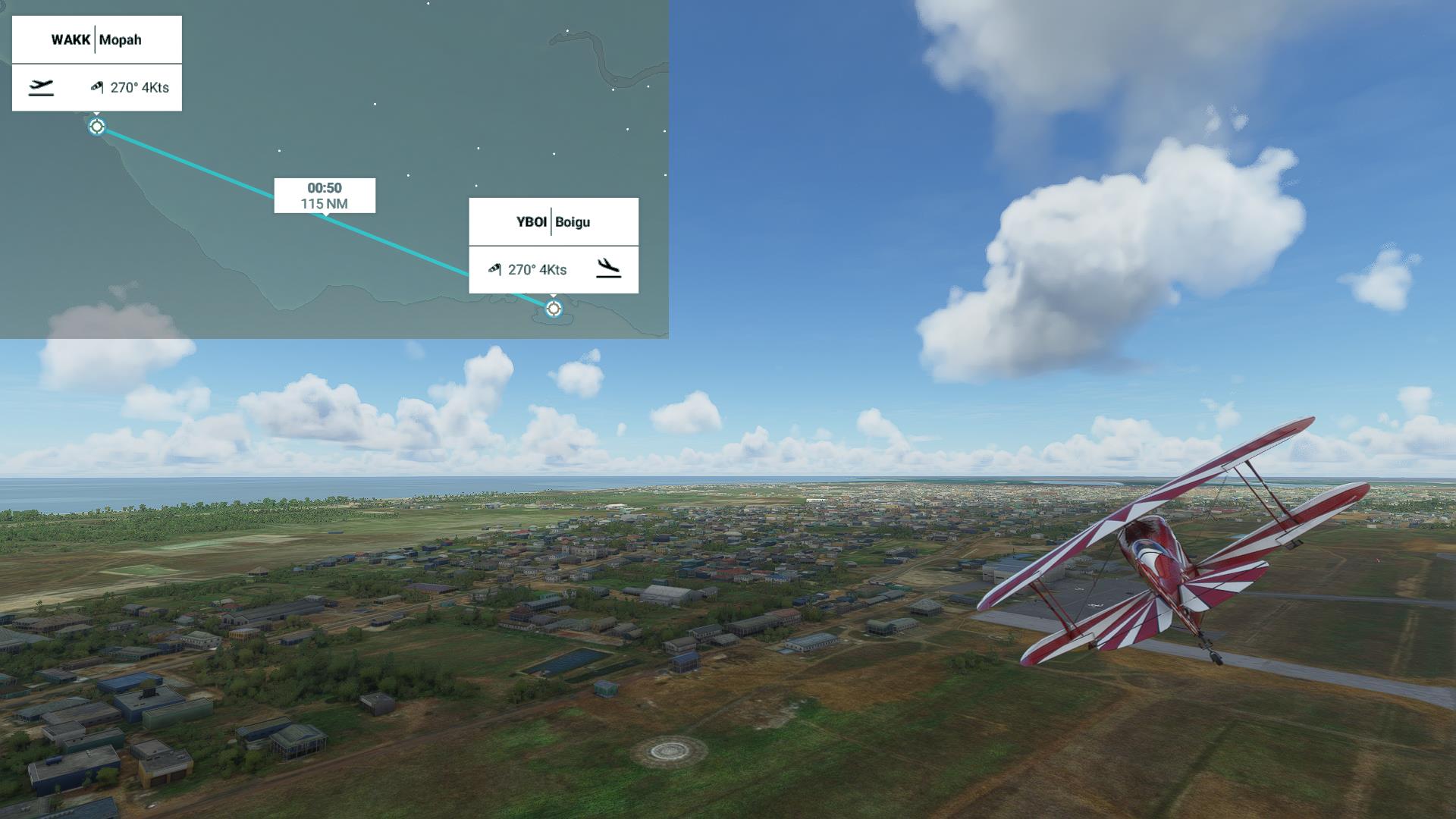
I'll be kind of sad to see Indonesia in the mirror. As long as you stay out of politics and religion it's a nice place. I'm sure Australia will be nice too. We're off to Boigu, just barely Australia and really more like New Guinea.
Mauuna na ako, Merauke.
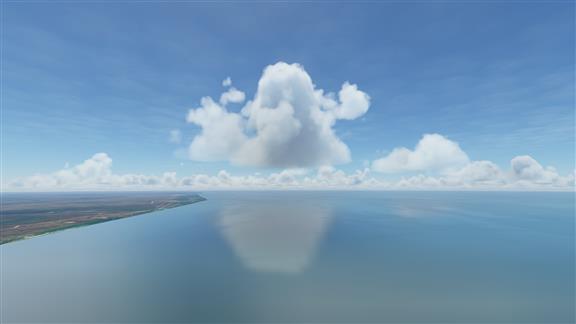 This will be a super short flight, just down the coast.
This will be a super short flight, just down the coast.
|
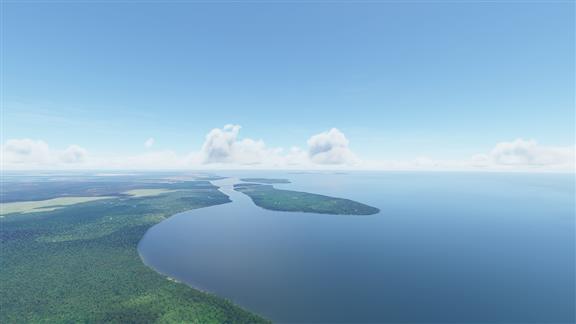 The Kawai Islands, New Guinea.
The Kawai Islands, New Guinea.
|
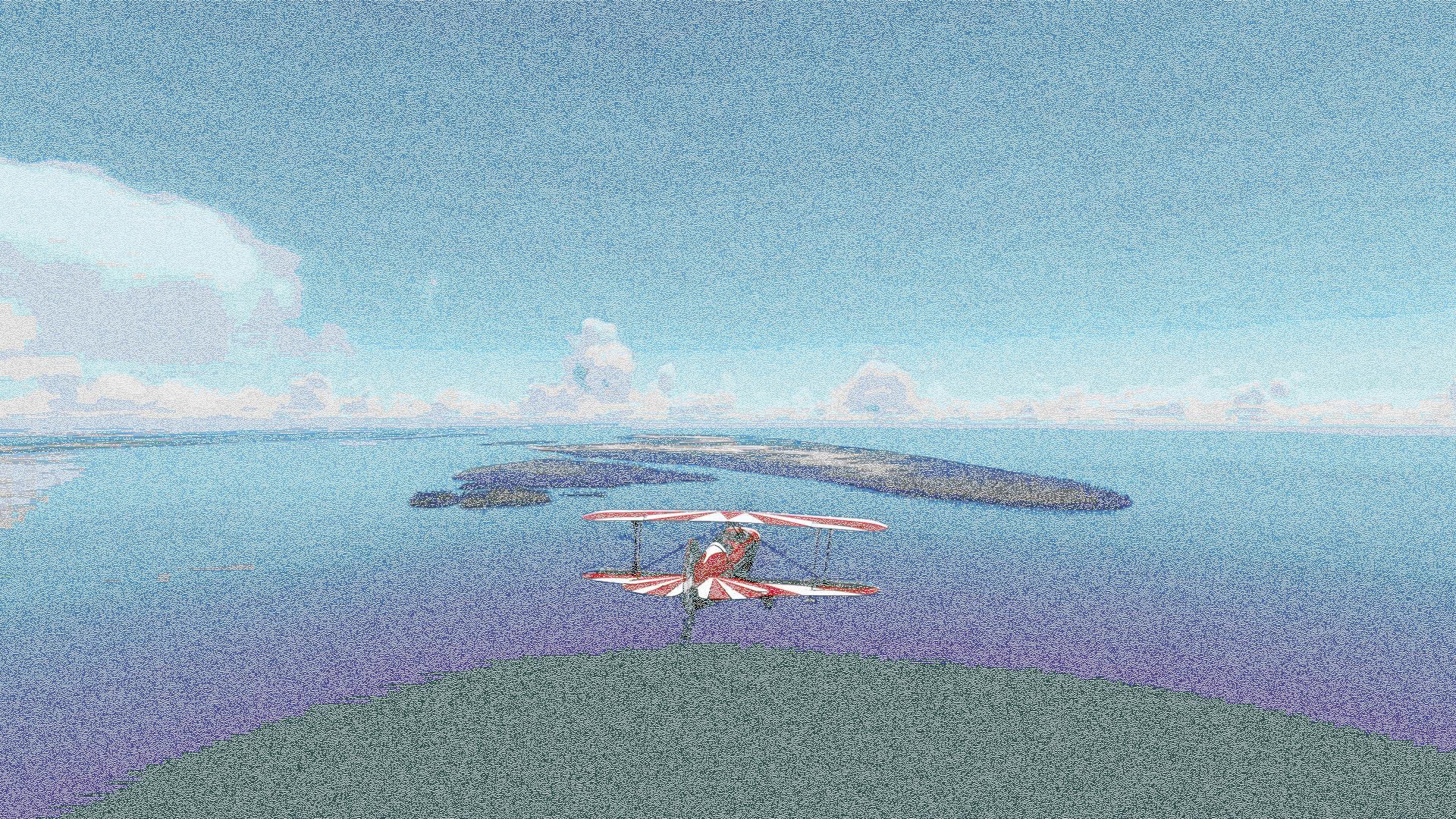 And Boigu Island, Queensland. We are now entering the Dreaming. The mainland aboriginal groups to the south and the Torres Strait Islanders up here to the north have complex belief systems which they describe to non-indigenous people as the Dreaming or the Dreamtime. Broadly speaking, the Dreamtime refers to the creation of all things. Different cultures throughout Australia have different dreams of the creation as is appropriate to their circumstances. Up here in the Torres Strait, an archipelago of eighteen larger islands and 256 smaller ones, scattered amongst 48,000 square kilometers of ocean, it is appropriate that the dreams are of Tagai.
And Boigu Island, Queensland. We are now entering the Dreaming. The mainland aboriginal groups to the south and the Torres Strait Islanders up here to the north have complex belief systems which they describe to non-indigenous people as the Dreaming or the Dreamtime. Broadly speaking, the Dreamtime refers to the creation of all things. Different cultures throughout Australia have different dreams of the creation as is appropriate to their circumstances. Up here in the Torres Strait, an archipelago of eighteen larger islands and 256 smaller ones, scattered amongst 48,000 square kilometers of ocean, it is appropriate that the dreams are of Tagai.Tagai was a mighty fisherman. He and twelve Zugubals, beings who can take on human form, set out in their canoe one day to go fishing. They were unsuccessful all day, and so Tagai left his crew to try it alone on a nearby reef. While he was gone, the crew drank all of the water onboard the canoe, including Tagai's. When he returned to the canoe, and saw what the crew had done, he flew into a rage and tied everyone up into two strings of six. Six of the crew he banished to Usal (the Pleiades cluster) and the rest were banished to Utimal (Orion). He told them to remain in the Northern sky and not to bother him any more. Tagai himself can be seen in the Southern skies, standing in his canoe. His left hand is the Southern Cross and he is holding a spear. His right hand is a group of stars in the Corvus constellation, and he is holding a Eugina fruit. His canoe is the Scorpius cluster. Tagai's left hand always points south. When it dips into the ocean, it is the time of Kuki, the wet season. When the mischievous crew, Usal and Utimal, rise in the North it is time to plant the gardens. The turtles and the dugong will be mating. When the constellation of the shark, Ursa Major to some, rises over the mainland to the north, the sharks will be mating, and it is time to plant sugar cane and sweet potato. So Tagai is central to the dreams of the Torres Strait Islanders. And the dreams are about the beginning. And it is still the beginning. The dreams continue. |
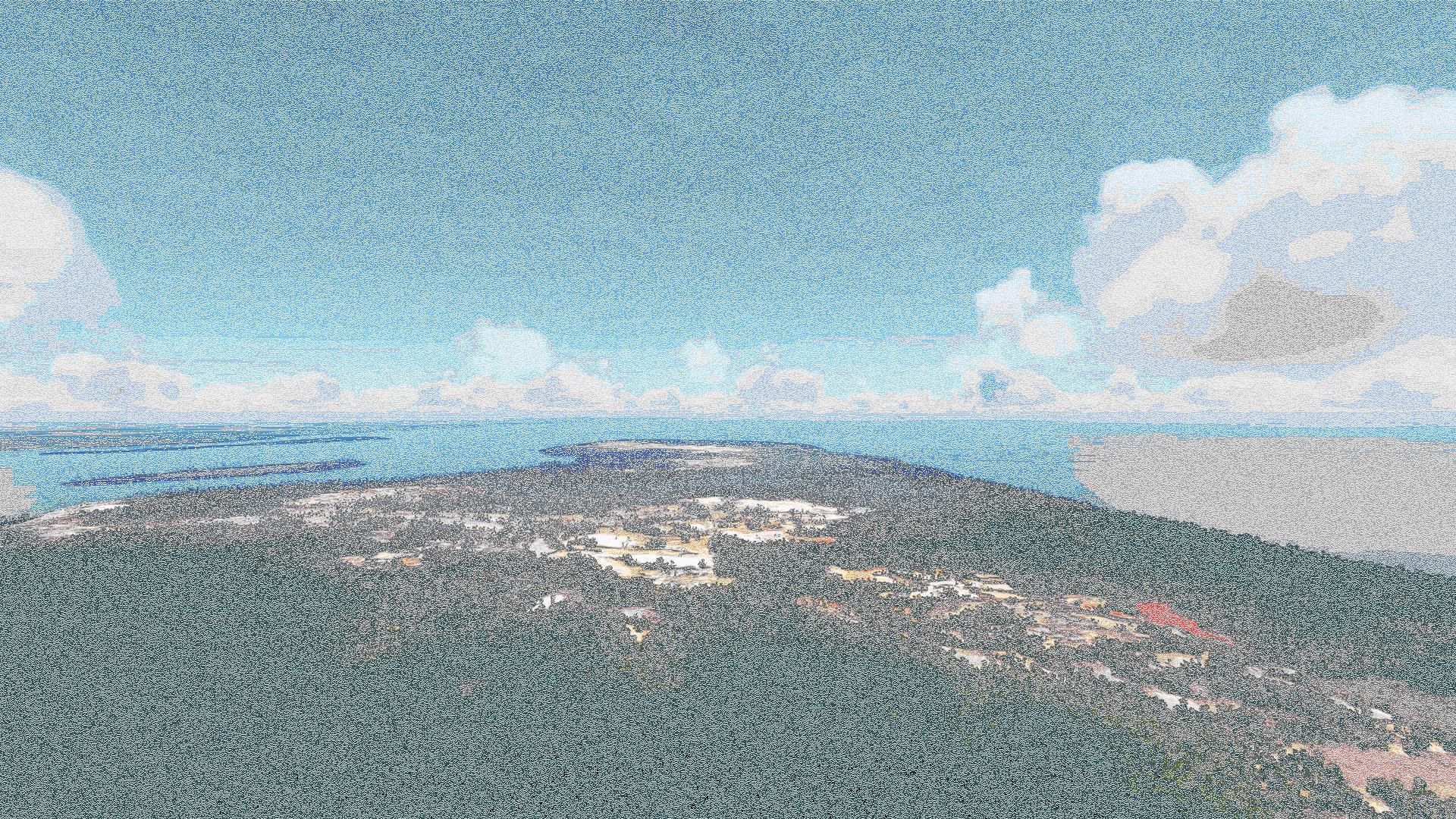 On Boigu Island we find the northernmost settlement in Australia (but not the northernmost point, which is 173 km east of here). There are approximately 340 Torres Straight Islanders living in Boigu. They consider themselves (and they would know) the same people as those of nearby Saibi and Dauan islands, and all speak the language Kalau Kawau Ya, although that is giving way to Torres Straight Creole.
On Boigu Island we find the northernmost settlement in Australia (but not the northernmost point, which is 173 km east of here). There are approximately 340 Torres Straight Islanders living in Boigu. They consider themselves (and they would know) the same people as those of nearby Saibi and Dauan islands, and all speak the language Kalau Kawau Ya, although that is giving way to Torres Straight Creole.The Boigu Islanders were thought to have been extinct in 1886 as a result of head-hunter raids by the fierce Marind-anim from West Papua; this opinion was put forward by Sir William MacGregor from the safety of British New Guinea. It turns out the people were simply staying with friends and family on Saibi and Dauan and, as has been said, they currently number 340. To the south and a little east of Boigu we have the islands of Iama, Masig, Poruma, Warraber and Nagir. The people there speak Kulkalgau Ya. West of those islands are Mabuyag, Badu and Mua, where they speak Mabayug. Going south we have Kiriri, Waiben, Ngurupai and Muralag, where the language is Kawrareg. On the extreme northern tip of the mainland we have the people of Seisia and Bamaga, who speak Kalau Kawau Ya, the same as the people of Boigu. All of these languages are considered dialects of the parent language, Kala Lagaw Ya. To the eastern extremity of the Torres Strait Islands we have Ugar, Erub and Mer islands, where the people speak a couple of dialects of the Meriam Mer language. So Boigu is merely the first island in what many consider to be the Nation of Torres Strait Islands. The region is fighting for its independence, although that is a tricky thing. Papua New Guinea has a claim against the northern islands, such as Boigu. If the islands were to gain total autonomy they would lose the protection of Australia in international matters. The Torres Strait Treaty of 1978 defines two boundaries between Australia and Papua: the Seabed Jurisdiction Line and the Fisheries Jurisdiction Line. Straddling these two boundaries is the Torres Strait Protected Zone, a region extending from the northern tip of Australia to the southern extent of Papua New Guinea, wherein Torres Strait Islanders are free to move about without visas in order to carry out traditional activities. So independence of a sort. Which brings us back to Boigu. Not so much an island, just the place where the silt from the mainland rivers catches on ancient coral. The entire island is a mangrove swamp and is an excellent place to catch salt water crocodiles. The salt water crocodiles share the same view, only their perspective is reversed. |
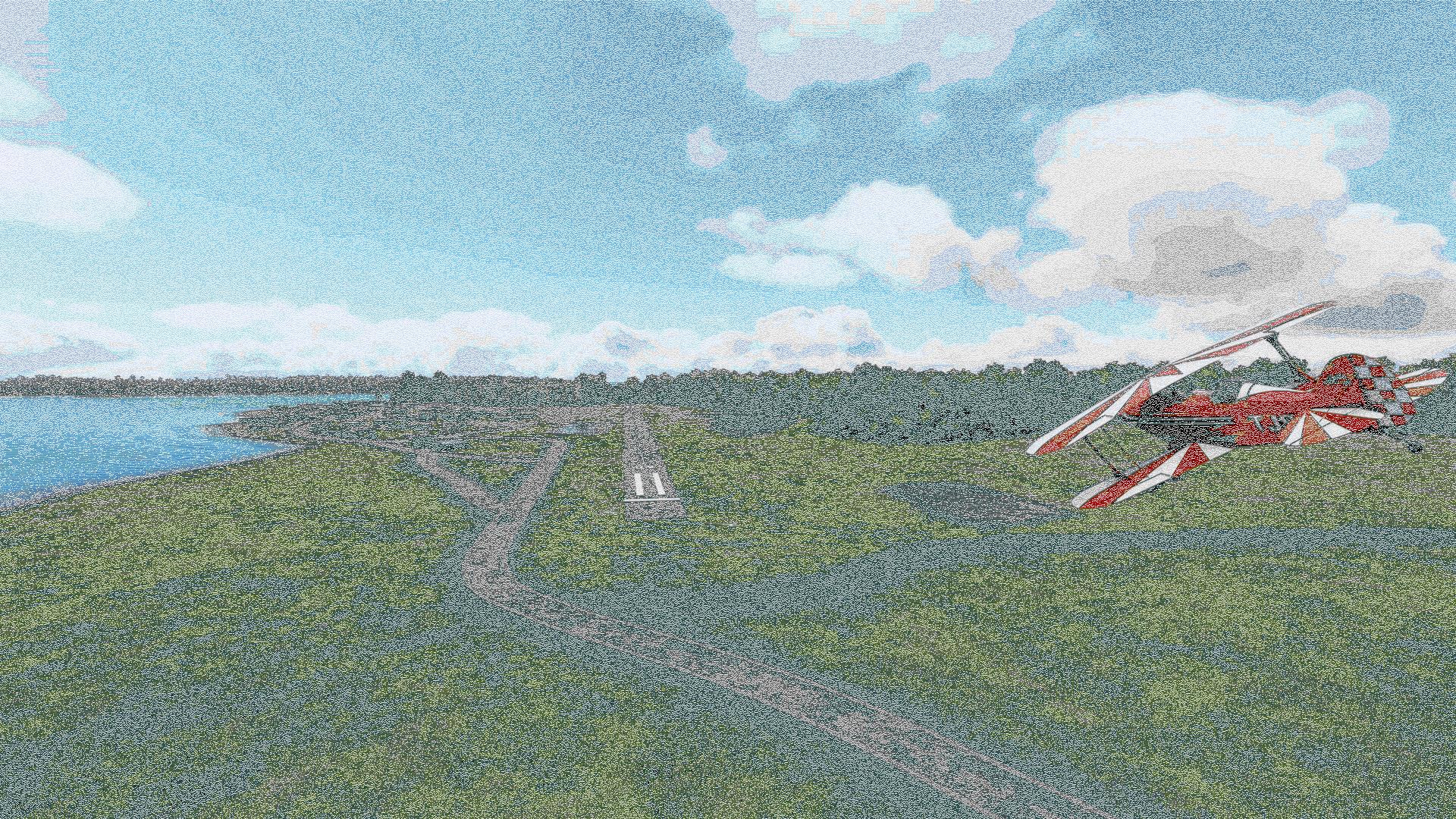 So welcome to Australia!
So welcome to Australia!
|